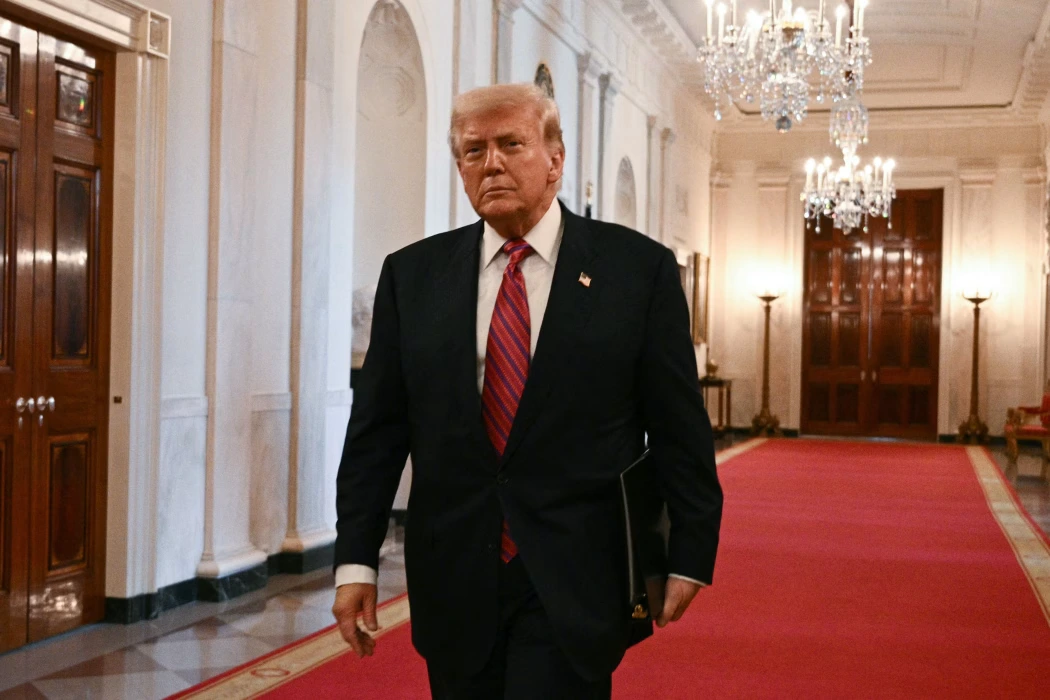On Friday, President Donald Trump filed a lawsuit against Dow Jones & Co., the publisher of The Wall Street Journal, accusing the newspaper of defamation over an article that claimed he sent a lewd birthday letter to Jeffrey Epstein in 2003.
The suit, filed in federal court in the Southern District of Florida, names not only Dow Jones but also its parent company, News Corp, as well as Rupert Murdoch (Chair Emeritus of News Corp), CEO Robert Thomson, and two WSJ reporters.
According to the lawsuit, the article falsely attributes to Trump a letter allegedly featuring a drawing of a naked woman and a risqué message. The complaint states that no such letter or drawing ever existed, and that the story was fabricated to damage Trump’s public image.
“Defendants concocted this story to malign President Trump’s character and integrity and deceptively portray him in a false light,” the suit reads.
A Dow Jones spokesperson responded:
“We have full confidence in the rigor and accuracy of our reporting and will vigorously defend against any lawsuit.”
News Corp has not yet commented on the case.
What the Journal Reported
The Wall Street Journal had reported a day earlier that British socialite Ghislaine Maxwell compiled letters from Epstein’s associates—including Trump—for a commemorative album marking Epstein’s 50th birthday in 2003. According to the Journal, the album contained a bawdy letter bearing Trump’s name, typed within an outline of a naked woman. The reported message ended with the phrase:
“Happy Birthday — and may every day be another wonderful secret.”
The article stated that pages from the leather-bound album, assembled before Epstein’s first arrest in 2006, had been reviewed by Justice Department officials during their investigation of Epstein and Maxwell. It remains unclear whether those materials are part of any recent government inquiry.
Trump Denies Letter and Drawing
Trump categorically denied writing the letter or drawing the figure:
“I never wrote a picture in my life. I don’t draw pictures of women,” he said. “It’s not my language. It’s not my words.”
He had previously threatened legal action in response to the publication.
Epstein Case and Media Allegations
Trump’s name has repeatedly surfaced in the broader public conversation around Jeffrey Epstein, the financier who was charged in 2019 with sex trafficking underage girls in Florida and New York. Epstein died in a federal detention center in Manhattan while awaiting trial; the official cause of death was suicide.
After the article appeared, Trump posted on social media that he had instructed Attorney General Pam Bondi to “produce any and all pertinent grand jury testimony, subject to Court approval!” On Friday, the Justice Department requested court authorization to make the release public.
According to Trump and his legal team, the WSJ publication is part of a coordinated campaign to discredit him ahead of the presidential election.
Trump’s Legal Battles with the Press
President Trump has long been known for his aggressive legal actions against major media outlets. He has filed numerous defamation suits against leading newspapers and TV networks. However, many of these lawsuits have been dismissed early, due to the high legal standard required for public figures in such cases. U.S. Supreme Court precedent demands that a plaintiff prove the publisher knowingly made a false statement or acted with reckless disregard for the truth.
Despite this, Trump has recently scored a few significant victories. In one case, ABC News (owned by Walt Disney) agreed to pay $15 million plus legal fees to settle a lawsuit over an interview by anchor George Stephanopoulos. In July, Paramount Global (owner of CBS) reached a similar settlement over a 60 Minutes segment featuring Vice President Kamala Harris, which Trump claimed was misleading and designed to support his political rivals.
In the current lawsuit against The Wall Street Journal, Trump is seeking $10 billion in damages.
This article was prepared based on materials published by The Wall Street Journal. The author does not claim authorship of the original text but presents their interpretation of the content for informational purposes.
The original article can be found at the following link: The Wall Street Journal.
All rights to the original text belong to The Wall Street Journal.


















